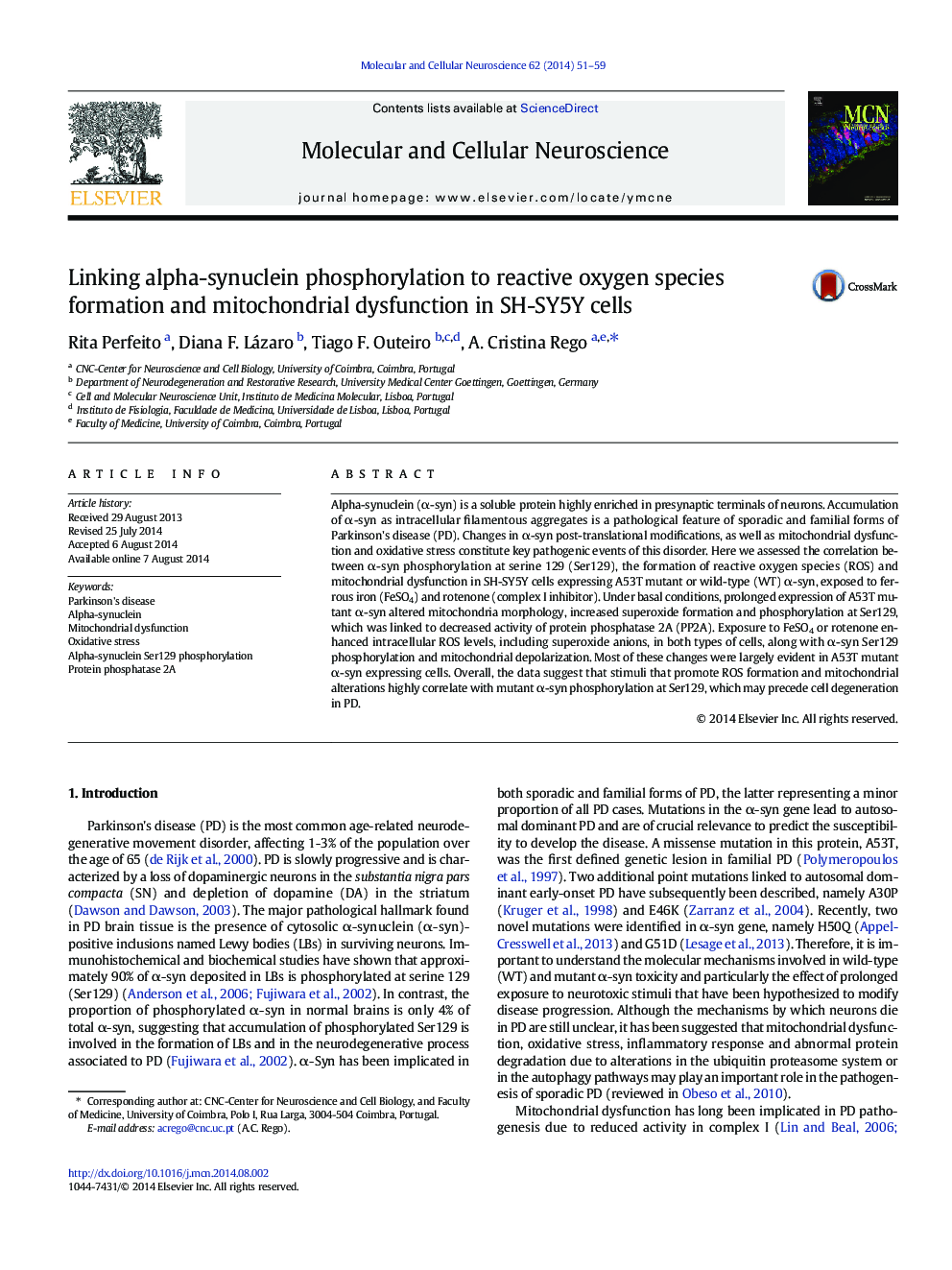| Article ID | Journal | Published Year | Pages | File Type |
|---|---|---|---|---|
| 2198448 | Molecular and Cellular Neuroscience | 2014 | 9 Pages |
•Prolonged expression of A53T α-syn increases superoxide anion formation.•Overexpressed A53T α-syn is prone to P-Ser129, linked to decreased activity of PP2A.•Prolonged iron and rotenone induce ROS formation and mitochondrial dysfunction.•Prolonged iron and rotenone exposure promotes P-Ser129 α-syn.
Alpha-synuclein (α-syn) is a soluble protein highly enriched in presynaptic terminals of neurons. Accumulation of α-syn as intracellular filamentous aggregates is a pathological feature of sporadic and familial forms of Parkinson's disease (PD). Changes in α-syn post-translational modifications, as well as mitochondrial dysfunction and oxidative stress constitute key pathogenic events of this disorder. Here we assessed the correlation between α-syn phosphorylation at serine 129 (Ser129), the formation of reactive oxygen species (ROS) and mitochondrial dysfunction in SH-SY5Y cells expressing A53T mutant or wild-type (WT) α-syn, exposed to ferrous iron (FeSO4) and rotenone (complex I inhibitor). Under basal conditions, prolonged expression of A53T mutant α-syn altered mitochondria morphology, increased superoxide formation and phosphorylation at Ser129, which was linked to decreased activity of protein phosphatase 2A (PP2A). Exposure to FeSO4 or rotenone enhanced intracellular ROS levels, including superoxide anions, in both types of cells, along with α-syn Ser129 phosphorylation and mitochondrial depolarization. Most of these changes were largely evident in A53T mutant α-syn expressing cells. Overall, the data suggest that stimuli that promote ROS formation and mitochondrial alterations highly correlate with mutant α-syn phosphorylation at Ser129, which may precede cell degeneration in PD.
